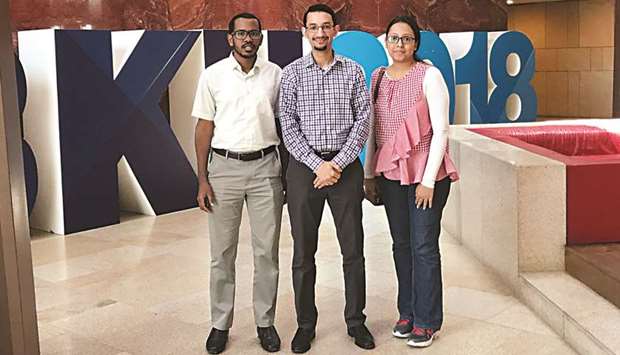With water sustainability at the forefront of Qatar’s priorities, Dr Sami G al-Ghamdi, assistant professor within Hamad Bin Khalifa University’s (HBKU) College of Science and Engineering’s Sustainable Development Division, and his research group are analysing urban water supply technologies, environmental impacts of the built environment’s hydrologic cycles, and potential mitigation strategies like renewable energy for Qatar.
As part of this research group, Mohamed Alhaj (PhD candidate) and Mehzabeen Mannan (Master’s student) are pursuing two streams of research related to the environmental impact of Qatar’s water desalination. Upon the completion of their projects later this year, their findings will serve as a baseline to policy-makers and water resources management organisations for an efficient water system that will help the built environment of Qatar.
Qatar today primarily relies on conventional thermal desalination technologies that use natural gas. This, however, presents a concern as thermal desalination technologies are quite energy-intensive and ultimately create a significant environmental impact, HBKU has said in a statement.
Mannan explained, “Similar to the other GCC countries, Qatar is producing huge quantities of desalinated water annually. However, the environmental impact of the desalination process is still poorly understood in this region. Hence, we focused on developing the life-cycle based framework to assess the impact comprehensively.”
The desalinated water is ultimately consumed by the country’s growing population as well as its burgeoning local agriculture and food production sector. “With saltwater as a readily available resource, we aimed to identify an environment-friendly, a technically sound and an economically feasible alternative to current desalination technologies,” Alhaj explained.
In the early stages of the project, Mehzabeen examined the environmental impact of water from thermal desalination in the life-cycle of the built environment. As part of her work, she investigated the carbon dioxide emission for producing water from different plant configurations in Qatar. The carbon dioxide emissions were found to be up to 12.6kg per m3.
Following on this, Alhaj’s study – titled “Policy Recommendations for Sustainable Water Resources Management in Qatar” – produced a comprehensive assessment of available water resources, consumption levels in Qatar as compared to the rest of the world.
Today, the team is working on robust computer modelling using real solar radiation data. Alhaj elaborated, “We are now using specialised computer simulations to test the feasibility of solar power as a potential long-term solution. The computer model we developed, using the Engineering Equation Solver, uses more than 500 equations to describe the solar desalination plant’s performance under variable conditions.”
The uniqueness of this study is in its comprehensive approach by investigating the technical, environmental, and economic aspects of solar-driven desalination. Mannan’s work also builds on this by investigating the potential reduction of carbon dioxide emissions by integrating solar thermal plants with thermal desalination.
Describing the cycle of this project, which was fully funded by HBKU and technically supported by its Qatar Environment and Energy Research Institute, Dr al-Ghamdi said, “We have seen our research evolve from a group study into a phase of digital experimentation, where our model is being tested across a variety of simulated scenarios and conditions. Every day, our belief strengthens that solar energy, in addition to generating power, is key to helping Qatar acquire water security as well.”

Dr Sami G al-Ghamdi with Mohamed Alhaj and Mehzabeen Mannan.
